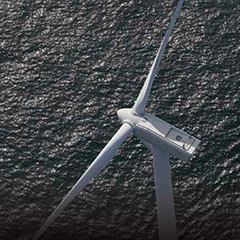After a very late start, momentum is finally building in the American offshore wind energy industry. With 14 projects in advanced stages of development, the latest outlook for wind is extremely positive. But can the country compete with its global competitors? We investigate.
Taken together, the planned projects hold out the potential to deliver some 4,900 megawatts of clean, renewable electricity to US businesses and communities, according to the Offshore Wind Market and Economic Analysis: 2014 Annual Market Assessment report, produced by Navigant Research.
Building offshore wind energy farms also means a lot more in the way of green jobs and economic stimulus. It also drives innovation that will help keep US industry competitive in cutting-edge wind and clean energy technologies.
Furthermore, realising US offshore wind energy potential will be a big step forward in terms of reducing US greenhouse gas emissions and dependence on fossil fuels. And that will be a big plus in terms of improving human and environmental health and safety, as well as reducing the potential for overseas conflicts.
Catching up
When it comes to offshore wind energy, the US is getting a late start as compared to European countries and China. While the US has zero in the way of installed wind power capacity, 2,304 offshore wind turbines with a total capacity of 7,343 MW were fully grid-connected in Europe as of mid-year 2014, according to the European Wind Energy Association’s (EWEA) latest report.
Large wind and solar power farms have the economics to go toe-to-toe with the cheapest fossil fuel-based power supplies in the United States according to the venerable financial advisory firm Lazard Ltd. Thanks to falling costs and rising efficiency, reports Lazard in an analysis released recently, utility-scale installations of solar panels and wind turbines now produce power at a cost that’s competitive with natural gas and coal-fired generating stations – even without subsidies.



























